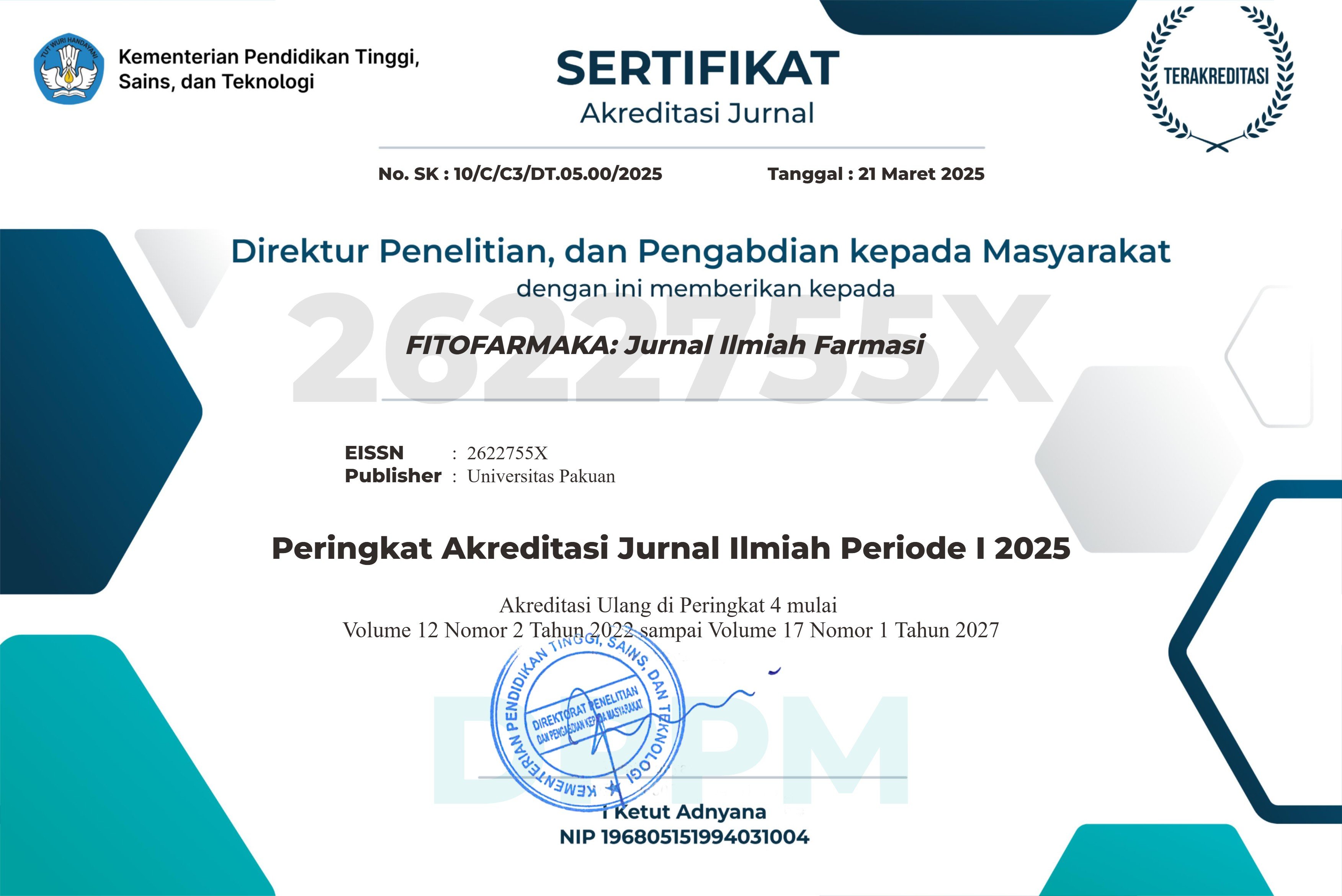Antioxidant Activity of Stingless Bee Propolis (Tetrigona apicalis) Extracts from Dammar Forest Vegetation
DOI:
https://doi.org/10.33751/jf.v14i2.10Abstract
Propolis, a resinous substance produced by bees, is renowned for its diverse biological activities, including antioxidant properties. The antioxidant potential of propolis is largely influenced by its botanical origin, which affects its phenolic and flavonoid content. This study aimed to evaluate the antioxidant activity and chemical composition of stingless bee propolis from Tetrigona apicalis, sourced from dammar forest vegetation in Lampung Province. Ultrasonic-Assisted Extraction (UAE) was performed using 96% and 70% ethanol to assess the impact of solvent concentration on extraction efficiency and bioactive compound yield. The total flavonoid content was significantly higher in the 96% ethanol extract (0.147 mg QE/g dry propolis) compared to the 70% ethanol extract (0.015 mg QE/g dry propolis), indicating the superior efficacy of higher ethanol concentration in extracting non-polar flavonoids. Despite this, the antioxidant activity, measured by DPPH and FRAP assays, was relatively low, with an IC50 value of 6001.33 μg/mL for DPPH and 0.067 mg AAE/g extract for FRAP. FTIR analysis confirmed the presence of functional groups associated with flavonoids, phenolic acids, and aliphatic hydrocarbons. The results suggest that the high resin content from dammar trees may dilute the concentration of potent antioxidant compounds, leading to weaker antioxidant activity. This study highlights the need for further optimization of extraction methods and comprehensive comparative studies to fully understand the bioactive potential of propolis from unique ecological settings like dammar forests. The findings contribute to the broader field of natural product research, with potential applications in cosmetics and pharmaceuticals.
Downloads
Published
How to Cite
Issue
Section
License
Copyright (c) 2024 FITOFARMAKA: JURNAL ILMIAH FARMASI

This work is licensed under a Creative Commons Attribution-ShareAlike 4.0 International License.








